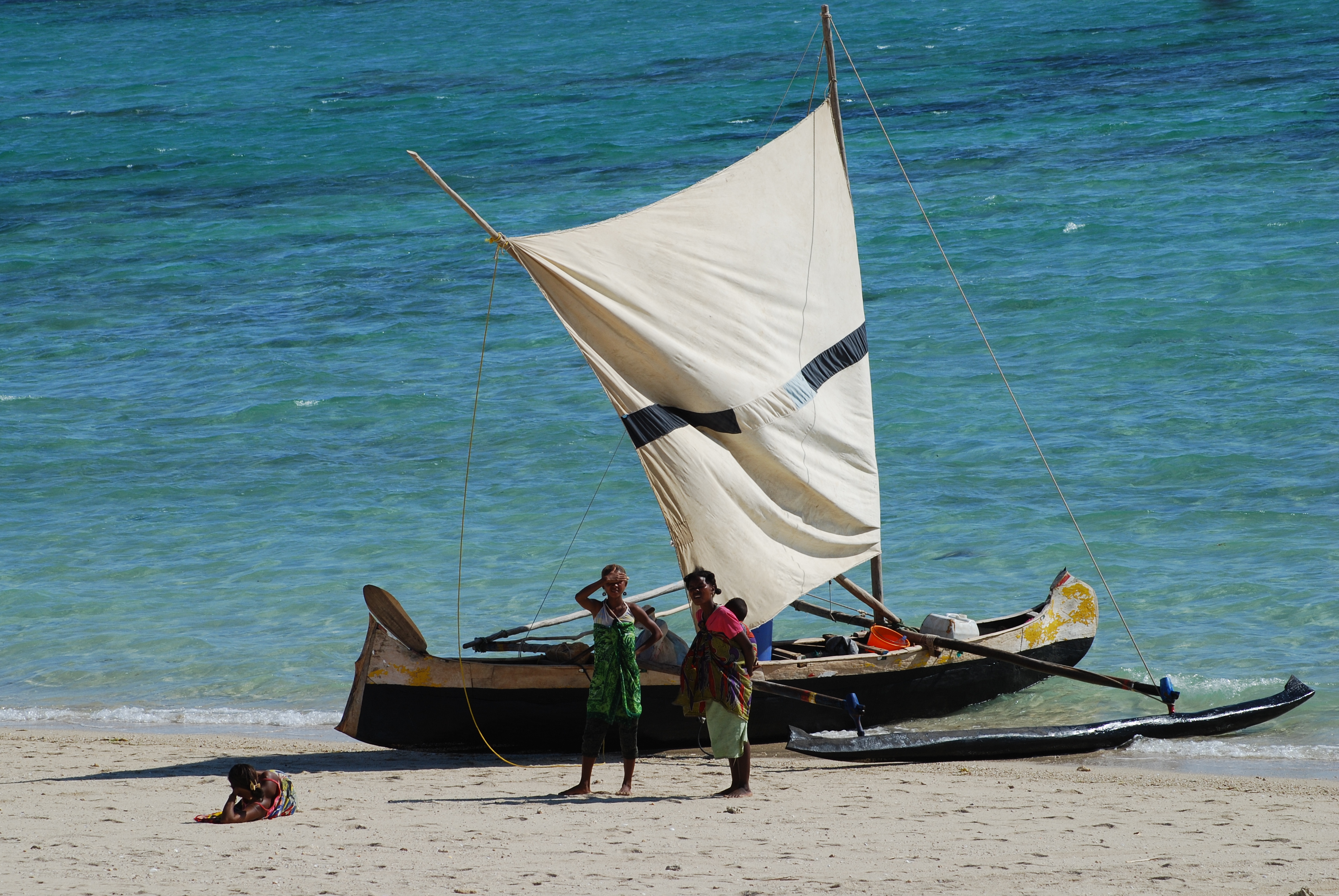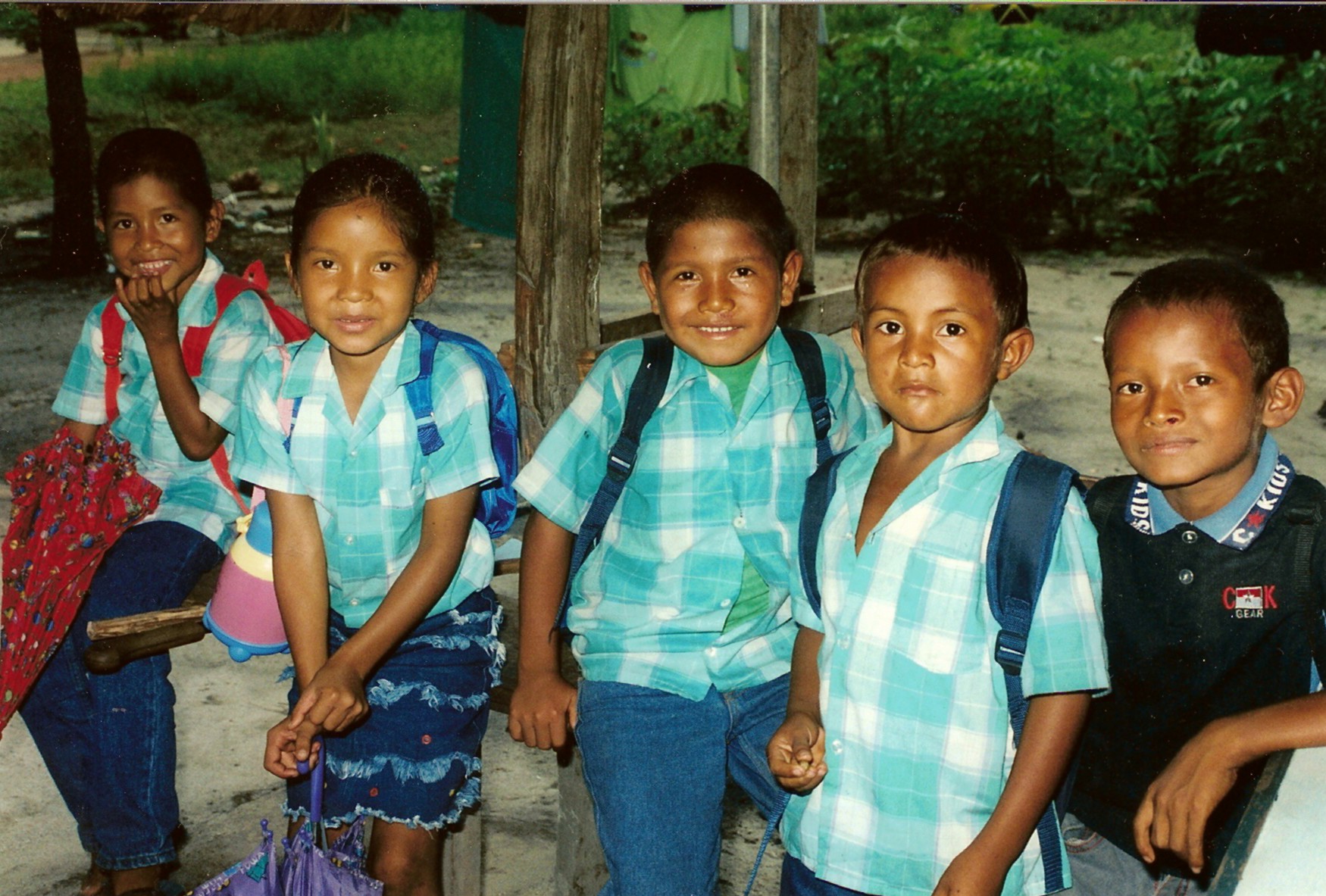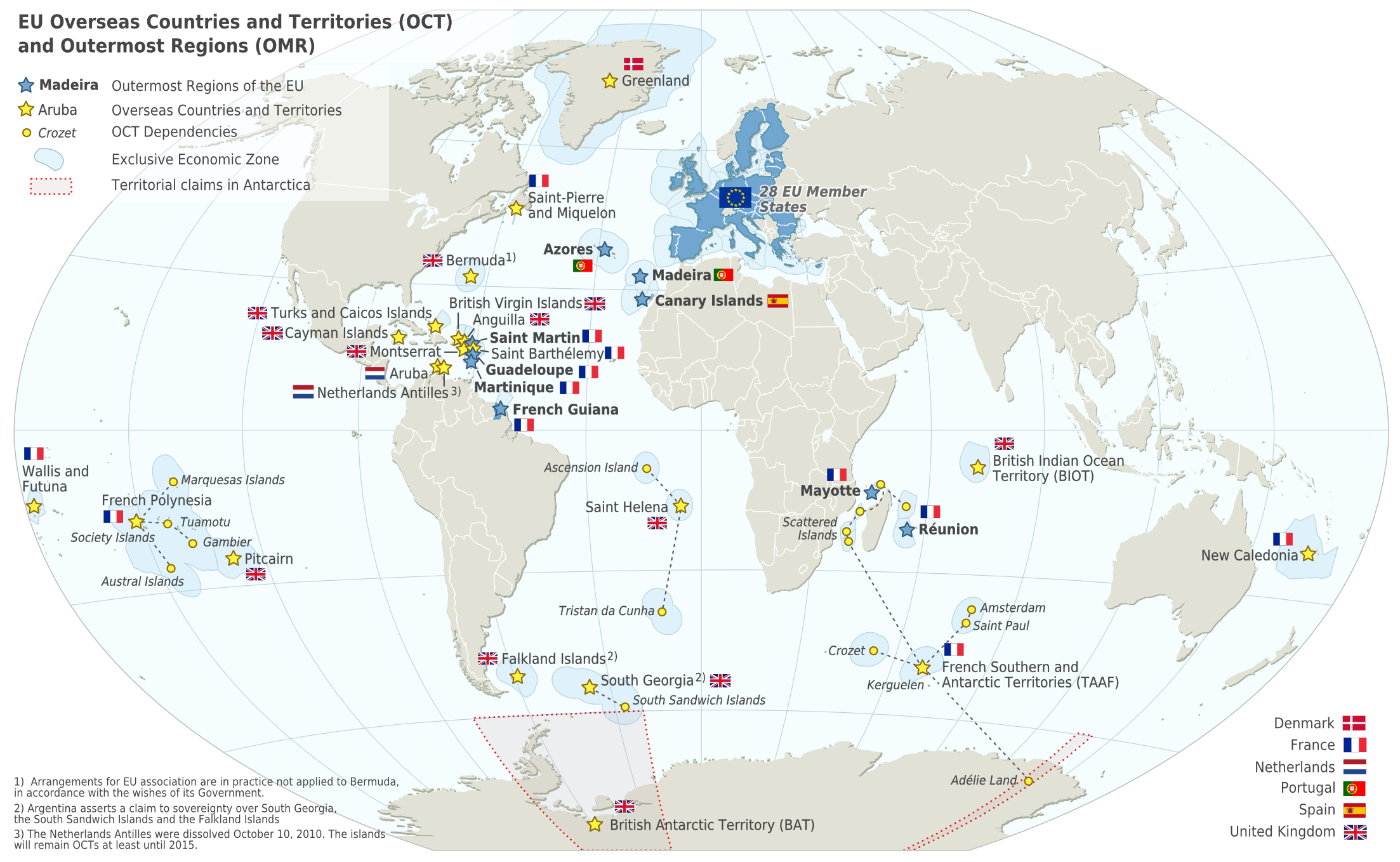|
ĂŽle Portal
Île Portal is an island in the Maroni River in the commune of Saint-Laurent-du-Maroni, French Guiana. The island measures 27 km2 History In 1852, Constant Bar started a plantation on the island to produce coffee, sugar and wood. The workforce consisted of African and East-Indian immigrants, and French convicts from the penal colony. In 1878, the island was visited by the explorer Jules Crevaux who noted that four brothers were operating the plantation. In the early 20th century, the island was bought by Talon who started a distillery on the island. In 1964, the distillery and the buildings burnt down in a fire. Indigenous inhabitants About 200 Kalina Amerindians used to live on the island. In the late 1970s, the island was bought by SCI de Provence, a real estate company, who wanted the Amerindians off their land. In 1981, they were told to leave the island, and resettle in Espérance. In 1983, the Prefecture of French Guiana refused to forcibly remove the remaining populatio ... [...More Info...] [...Related Items...] OR: [Wikipedia] [Google] [Baidu] [Amazon] |
France
France, officially the French Republic, is a country located primarily in Western Europe. Overseas France, Its overseas regions and territories include French Guiana in South America, Saint Pierre and Miquelon in the Atlantic Ocean#North Atlantic, North Atlantic, the French West Indies, and List of islands of France, many islands in Oceania and the Indian Ocean, giving it Exclusive economic zone of France, one of the largest discontiguous exclusive economic zones in the world. Metropolitan France shares borders with Belgium and Luxembourg to the north; Germany to the northeast; Switzerland to the east; Italy and Monaco to the southeast; Andorra and Spain to the south; and a maritime border with the United Kingdom to the northwest. Its metropolitan area extends from the Rhine to the Atlantic Ocean and from the Mediterranean Sea to the English Channel and the North Sea. Its Regions of France, eighteen integral regions—five of which are overseas—span a combined area of and hav ... [...More Info...] [...Related Items...] OR: [Wikipedia] [Google] [Baidu] [Amazon] |
Distillery
Distillation, also classical distillation, is the process of separating the component substances of a liquid mixture of two or more chemically discrete substances; the separation process is realized by way of the selective boiling of the mixture and the condensation of the vapors in a still. Distillation can operate over a wide range of pressures from 0.14 bar (e.g., ethylbenzene/ styrene) to nearly 21 bar (e.g.,propylene/propane) and is capable of separating feeds with high volumetric flowrates and various components that cover a range of relative volatilities from only 1.17 ( o-xylene/ m-xylene) to 81.2 (water/ ethylene glycol). Distillation provides a convenient and time-tested solution to separate a diversity of chemicals in a continuous manner with high purity. However, distillation has an enormous environmental footprint, resulting in the consumption of approximately 25% of all industrial energy use. The key issue is that distillation operates based on phase changes, a ... [...More Info...] [...Related Items...] OR: [Wikipedia] [Google] [Baidu] [Amazon] |
Islands Of French Guiana
The following are lists of the islands of South America by country. Argentina Atlantic Ocean islands *''Isla ApipĂ©'' *'' Isla Bermejo'' *''Isla de los Estados'' *'' Isla de San MartĂn'' *''Isla del Cerrito'' *''Isla MartĂn GarcĂa'' *'' Isla Trinidad (Buenos Aires)'' * Patagonic Archipelago **'' ArchipiĂ©lago de Tierra del Fuego'' ***''Isla Grande de Tierra del Fuego'' (divided with Chile) ***''Isla de los Estados'' Lake islands *'' Isla Huemul'' *'' Isla Victoria'' River islands *Islands of the Paraná River delta **'' Islas del Ibicuy'' Bolivia Bolivia is a landlocked country with no ocean islands. Lake islands *'' Isla del Pescado'' (Incahuasi Island) *''Isla del Sol'' *''Isla de la Luna'' Brazil Atlantic Ocean islands *'' Arquipelago de Fernando de Noronha'' *''ArquipĂ©lago de SĂŁo Pedro e SĂŁo Paulo'' (Saint Peter and Paul Rocks) *''Atol das Rocas'' (Rocas Atoll) *'' Ilha de Boipeba'' *'' Ilha de Maraca'' *'' Ilha da Queimada Grande'' *''Ilha de Santa ... [...More Info...] [...Related Items...] OR: [Wikipedia] [Google] [Baidu] [Amazon] |
Pirogue
A pirogue ( or ), also called a piragua or piraga, is any of various small boats, particularly dugouts and canoes. The word is French and is derived from Spanish ''piragua'' , which comes from the Carib '. Description The term 'pirogue' does not refer to a specific kind of boat, but is a generic term for small boats in regions once colonized by France and Spain, particularly dugouts made from a log. In French West Africa, the term refers to handcrafted banana-shaped boats used by traditional fishermen. In Madagascar, it also includes the more elaborate Austronesian ''lakana'' outrigger canoe. Pirogues are usually propelled by paddles that have one blade (as opposed to a kayak paddle, which has two). It can also be punted with a push pole in shallow water. Small sails are built by local fishermen and they can also be employed. There are two types of sails with differences in their shapes, the square one is used mainly for fishing near the coast and is only useful for ... [...More Info...] [...Related Items...] OR: [Wikipedia] [Google] [Baidu] [Amazon] |
Prefecture
A prefecture (from the Latin word, "''praefectura"'') is an administrative jurisdiction traditionally governed by an appointed prefect. This can be a regional or local government subdivision in various countries, or a subdivision in certain international church structures. During the antiquity, it was the name of a type of Roman district. In the 21st century, the term prefecture is used for the modern first-level subdivisions of the Central African Republic, Japan, and Morocco. Literal prefectures Antiquity ''Prefecture'' originally referred to several distinct administrative structures in ancient Rome. In the Roman Republic and early Empire, a praefectura was a town or community lacking full civic autonomy and administered by a Roman-appointed Praefectus. These praefecturae were common in Italy before the extension of Roman citizenship and typically occupied a lower legal status than a municipium or colonia. Later, during the Tetrarchy, Emperor Diocletian reorganized th ... [...More Info...] [...Related Items...] OR: [Wikipedia] [Google] [Baidu] [Amazon] |
Espérance, French Guiana
Espérance (Kalina: ''Wilamila'') is a village of Kalina Amerindians in the commune of Saint-Laurent-du-Maroni. The village is located about 12 kilometres south of Saint-Laurent-du-Maroni on the road to Saint-Jean-du-Maroni. Overview About 200 Kalinas used to live on Île Portal, an island in the Maroni River The Maroni () or Marowijne (; ) is a river in South America that forms the border between French Guiana and Suriname. Course The Maroni runs through the Guianan moist forests ecoregion. It originates in the Tumuk Humak Mountains and forms .... The island on which they lived was bought by SCI de Provence. In 1981, they were removed from the island and resettled in Espérance. Espérance has a school. The village can be accessed by an unpaved road. Two companies are located near the village, and their heavy trucks make the road impassable. In 2006, the main road to Saint-Jean-du-Maroni was blocked by the villagers. In 2020, Claire-Suzanne Poulin was elected Yopoto ... [...More Info...] [...Related Items...] OR: [Wikipedia] [Google] [Baidu] [Amazon] |
Amerindians
In the Americas, Indigenous peoples comprise the two continents' pre-Columbian inhabitants, as well as the ethnic groups that identify with them in the 15th century, as well as the ethnic groups that identify with the pre-Columbian population of the Americas as such. These populations exhibit significant diversity; some Indigenous peoples were historically hunter-gatherers, while others practiced agriculture and aquaculture. Various Indigenous societies developed complex social structures, including pre-contact monumental architecture, organized city, cities, city-states, chiefdoms, state (polity), states, monarchy, kingdoms, republics, confederation, confederacies, and empires. These societies possessed varying levels of knowledge in fields such as Pre-Columbian engineering in the Americas, engineering, Pre-Columbian architecture, architecture, mathematics, astronomy, History of writing, writing, physics, medicine, Pre-Columbian agriculture, agriculture, irrigation, geology, minin ... [...More Info...] [...Related Items...] OR: [Wikipedia] [Google] [Baidu] [Amazon] |
Kalina People
The Kalina, also known as the Caribs or mainland Caribs and by several other names, are an Indigenous people native to the northern coastal areas of South America. Today, the Kalina live largely in villages on the rivers and coasts of Venezuela, Guyana, Suriname, French Guiana, and Brazil. They speak a Cariban language known as Carib. They may be related to the Island Caribs of the Caribbean, though their languages are unrelated. Name The exonym ''Caribe'' was first recorded by Christopher Columbus. One hypothesis for the origin of ''Carib'' is that it means "brave warrior". Its variants, including the English ''Carib'', were then adopted by other European languages. Early Spanish colonizers used the terms '' Arawak'' and ''Caribs'' to distinguish the peoples of the Caribbean, with ''Carib'' reserved for Indigenous groups that they considered hostile and ''Arawak'' for groups that they considered friendly. The Kalina call themselves ''Kalina'' or ''Karìna'' , spelled vario ... [...More Info...] [...Related Items...] OR: [Wikipedia] [Google] [Baidu] [Amazon] |
Jules Crevaux
Jules Crevaux (1847–1882) was a French medical doctor, soldier, and explorer. He is known for his multiple explorations into the interior of French Guiana and the Amazon. Biography Jules Crevaux was born on April 1, 1847, in the north-eastern French town of Lorquin. He began to study medicine at the University of Strasbourg before being transferred to the French Navy's medical school at Brest. In 1868 he was assigned to the ''Cérès'' as a medical assistant and served in Senegal, the French West Indies and French Guiana. At the beginning of the Franco-Prussian War in 1870, he volunteered to serve as a marine. He was sent to the Loire Valley where he was wounded and captured by Prussian forces on December 17, 1870. He escaped soon after and was wounded again on January 24, 1871. Following the war, he completed his medical studies and was granted his M.D.. He was appointed as chief physician on the ''La Motte-Piquet.'' He was sent to the colony of French Guiana in ... [...More Info...] [...Related Items...] OR: [Wikipedia] [Google] [Baidu] [Amazon] |
Overseas Region
The overseas departments and regions of France (, ; DROM) are the five departments and regions of the French Republic which are located outside European France (also known as " metropolitan France"). These overseas entities have exactly the same status as European France's departments and regions. The French Constitution provides that, in general, French laws and regulations (France's civil code, penal code, administrative law, social laws, and tax laws etc.) apply to French overseas departments and regions the same way as in metropolitan France, but can be adapted as needed to suit the region's particular needs. Hence, the local administrations of French overseas departments and regions cannot themselves pass new laws. On occasion, referendums are undertaken to re-assess the sentiment in local status. Since March 2011, the five overseas departments and regions of France are: * French Guiana in South America, a part of The Guianas; * Guadeloupe in the Caribbean Sea, a part ... [...More Info...] [...Related Items...] OR: [Wikipedia] [Google] [Baidu] [Amazon] |
Prison Of St-Laurent-du-Maroni
The prison of Saint-Laurent-du-Maroni was the main penal colony in French Guiana for more than a century. Some of the buildings were restored in the early 1980s. History On 22 November 1850, Napoleon III declared: "Six thousand condemned men in our prisons weigh heavily on our budget, becoming increasingly depraved and constantly menacing our society. I think it is possible to make the sentence of forced labour more effective, more moralising, less expensive and more humane by using it to further the progress of French colonisation." The first batch of prisoners left the Breton port of Brest for the ĂŽles du Salut on 31 March 1852. The prison at St-Laurent-du-Maroni was established on the banks of the Maroni River on 21 February 1858. All the prisoners sent from France were taken there before being transferred to other prisons or camps. The town of Saint-Laurent-du-Maroni proper was founded on 16 March 1880; it was a penal town whose inhabitants were nearly all guards o ... [...More Info...] [...Related Items...] OR: [Wikipedia] [Google] [Baidu] [Amazon] |




